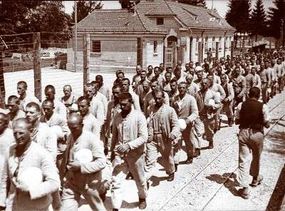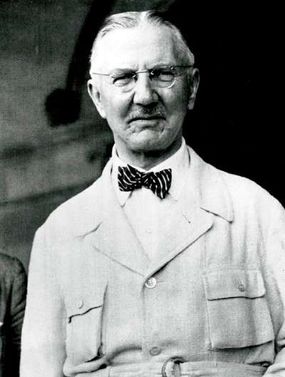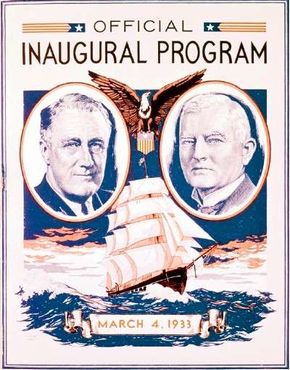World War II Timeline: November 16, 1933-December 1934
World War II tensions increased when Adolf Hitler became chancellor and president of Nazi Germany in August 1934, and Italian dictator Benito Mussolini built up his Italian military. The World War II timeline below summarizes important events that occurred from November 16, 1933 to December 1934.
World War II Timeline: November 16, 1933-December 1934
November 16, 1933: Washington normalizes diplomatic relations with Moscow, with the understanding that Moscow will not sponsor Communist propaganda within the United States.
Advertisement
January 1, 1934: In a year that will see massive buildup of all branches of the German military, officials order some 4,000 new aircraft for the Luftwaffe.
May 5, 1934: The Soviet Union and Poland reaffirm their mutual nonaggression pact, strengthening the geographical buffer zone between Russia and Nazi Germany.
June 14-15, 1934: Adolf Hitler and Italian dictator Benito Mussolini rendezvous in Venice and leave their first face-to-face meeting mutually unimpressed, with Benito Mussolini whispering "I don't like him" to his staff.
June 30, 1934: At least 77, and perhaps as many as 400, are killed during Nazi Germany's "Night of the Long Knives," a purge of Nazi Party and other enemies ordered by Adolf Hitler that will secure his ascendancy in the state.
July 25, 1934: Austrian Nazis murder Chancellor Engelbert Dollfuss in a coup attempt. He will be succeeded by Kurt von Schuschnigg.
August 1934: Adolf Hitler officially becomes Der Führer, a combination of chancellor and president, when the German army swears him allegiance upon the death of President von Hindenburg.
August 19-September 1934: Chinese Nationalist troops launch an aggressive campaign to eject Chinese Communists from their occupied territory south of the Yangtze River.
September 18, 1934: The Soviets belatedly join the League of Nations.
December 1934: A buildup of the Italian military follows Benito Mussolini's order for the conquest of Abyssinia (present-day Ethiopia).
World War II Headlines
The headlines below outline more major events of World War II that took place as Adolf Hitler and Nazi Germany rose to power.
The Nazi educational system is used to mold children into Nazis: German children would often parrot their teacher's Nazi salute, as the Third Reich carefully subverted the educational system in order to mold children into loyal adult Nazis. School curricula reflected the Nazi line, blaming Jews and Marxists for Nazi Germany's woes. Biology courses taught the "reality" of Aryan racial superiority, while science courses focused on military themes. To ensure compliancy, teachers were vetted by local Nazi officials; 97 percent joined the Nazi Teachers Association.
Direct protests are a part of anti-Nazi sentiment in Britain in the 1930s: British views on Adolf Hitler and the rise of the Nazis during the 1930s were often ambivalent. Many underestimated the Nazis or thought them irrelevant, while others actually admired Adolf Hitler's achievements in Nazi Germany. However, some of those who understood the Nazi policies resorted to direct protests in a vain attempt to expose the growing peril. In 1933 three men and one woman were convicted for damaging this wax figure of Adolf Hitler at Madame Tussauds, a wax museum in London.
President Franklin D. Roosevelt and Vice President John Nance Garner take office in March 1933: Newly elected, President Franklin Delano Roosevelt and Vice President John Nance Garner took office in March 1933. During his campaign, President Franklin Delano Roosevelt had proposed ways to pull the country out of the Depression. Although his sophisticated education included a background in international affairs, President Franklin Delano Roosevelt's foreign agenda seemed compatible with the nation's isolationism. However, at the 1936 Democratic National Convention, he stated that all was not well with the world, warning that "clouds of suspicion, tides of ill-will and intolerance gather darkly in many places." FDR would initiate naval and air rearmament in 1936 and 1938, respectively, and put the U.S. on a war footing in 1939.

The Dachau concentration camp holds opponents of the Nazi regime: Prisoners march to the kitchen with mess kits for a meal at the Dachau, Germany, concentration camp, which opened in March 1933 as a prison for opponents of the Nazi regime. Political prisoners were soon joined by Gypsies, Jehovah's Witnesses, homosexuals, clergy, and repeat criminals. Gradually, the number of Jews increased at Dachau, especially after Kristallnacht in 1938. Selections for extermination began at Dachau in 1941. In all, the camp held nearly 200,000 prisoners, and about 30,000 were killed. Thousands more died from medical experiments, forced labor, and horrific living conditions. The Nazis, who considered Dachau an ideal concentration camp, modeled others after it.

Hjalmar Schacht was Nazi Germany's economic mastermind: Hjalmar Schacht was a brilliant German financier who believed in "a sound economy in a strong state" and that "the basic ideas of National Socialism contain a great deal of truth." During the 1920s and 1930s, Hjalmar Schacht utilized his mastery of economics and the correlation between the state, industry, and commerce to help Adolf Hitler. As president of the Reichsbank and minister of economics, he established the financial trickery that enabled German rearmament.
Nazi Brownshirts burn more than 20,000 "un-German" books: On May 10, 1933, Nazi Brownshirts ransacked libraries, public buildings, private offices, and even private homes for materials deemed un-German. Chanting scripted slogans, students and Storm Troopers threw more than 20,000 books into roaring bonfires. Bands played and officials gave speeches. In Berlin, Propaganda Minister Joseph Goebbels announced, "The future German man will not just be a man of books, but a man of character."
Many important events in the buildup of World War II occurred between December 1, 1934, and September 15, 1935. The World War II timeline on the following page details these important events.
For additional information about World War II, see:
